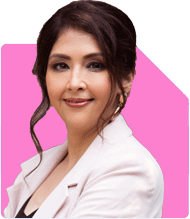35-Year-Old Earning ?2 Lakhs Seeks Retirement Advice: How to Invest ?50,000 Monthly?
Ramalingam Kalirajan |10881 Answers |Ask -Follow
Mutual Funds, Financial Planning Expert - Answered on Oct 14, 2024
He has an MBA in finance from the University of Madras and is a certified financial planner.
He is the director and chief financial planner at Holistic Investment, a Chennai-based firm that offers financial planning and wealth management advice.... more

I am 35 years old with a take-home salary of ?2 lakhs per month. I have a home loan of ?65 lakhs with an EMI of ?66,000 per month and approximately 13 years remaining. I have invested around ?16 lakhs in shares until 2022, which is now valued at ?25 lakhs. My current mutual fund portfolio is around ?19 lakhs, and I have ?30 lakhs in PPF and ?15 lakhs in savings. Additionally, I invest ?15,000 per month in NPS. Currently, I am investing ?10,000 in index funds and ?2,000 each in Kotak Emerging Equity Fund (G), Mirae Asset Large Cap Fund-Reg (G), and Parag Parikh Flexi Cap Fund-Reg (G) through SIPs. I am planning to invest ?50,000 every month for the next 15 years. Could you please advise on the best way to invest this amount for a better retirement?
Let's break down the best strategy to invest Rs. 50,000 monthly for the next 15 years, ensuring a secure retirement and an optimal balance between growth and risk.
Assessing Your Current Investments
Shares (Rs. 25 lakhs value): Good growth from Rs. 16 lakhs investment until 2022 shows your stock selection was effective. But equities are highly volatile and can cause fluctuations in your portfolio's value. Consider reducing concentrated stock exposure if the risk feels high for your comfort. Balancing this with mutual funds could bring stability.
Mutual Funds (Rs. 19 lakhs): Your existing investments in actively managed funds are solid choices. They offer diversification and potential for better long-term returns than direct stock investments. However, it’s important to assess fund performance regularly and make adjustments if needed.
PPF (Rs. 30 lakhs): This is a safe investment providing tax benefits and risk-free returns. Continue this as part of your retirement corpus since it offers a steady, guaranteed income stream in the future.
Savings (Rs. 15 lakhs): Savings is crucial for emergencies, but holding too much in cash can reduce potential returns. You should aim to keep 6–12 months of expenses in liquid funds, and the rest can be channeled into higher-return investments.
Home Loan Impact
Your Rs. 65 lakh home loan with an EMI of Rs. 66,000 has a significant role in your financial situation. With 13 years remaining, managing this alongside your investment strategy is key.
Repayment Strategy: Home loans come with tax benefits, so aggressive prepayment may not always be the best move. Focus on maintaining regular EMI payments and use extra funds only if interest rates rise or your other goals are secure.
Balancing EMI and Investments: Given your stable income, continue paying the EMI while maximizing long-term investments. This balance will ensure that your home loan doesn’t restrict your financial growth.
The Importance of Diversification
Your current portfolio is well diversified, covering stocks, mutual funds, PPF, and NPS. However, there are areas for optimization.
Index Funds: You are currently investing Rs. 10,000 in index funds. While index funds provide low-cost exposure to broad markets, they may not always outperform actively managed funds. Index funds track the market passively and don't offer the advantage of tactical shifts during market volatility. Consider reducing your index fund exposure and shifting a portion into actively managed funds for potential outperformance. Actively managed funds, especially through a Certified Financial Planner (CFP), allow expert management, adjustments during market cycles, and better chances of beating inflation.
Mutual Funds (Regular Plans): It is crucial to invest in regular plans of mutual funds through a Certified Financial Planner (CFP). Regular plans provide access to professional advice, enabling you to make better-informed decisions and adapt your investments as needed. Direct funds, on the other hand, leave you without such guidance, making it harder to navigate the complexities of the market. The CFP-backed advisor can optimize your portfolio with a tailored approach to suit your risk profile, future goals, and market conditions.
Sectoral and Thematic Funds: Avoid sector-specific funds as they concentrate risk in one area of the economy. For long-term retirement goals, it’s better to stick with diversified funds that mitigate risk by spreading investments across multiple sectors.
Future Investments: Rs. 50,000 Monthly
To meet your retirement goals, investing Rs. 50,000 monthly for the next 15 years is a wise move. Here's a strategy to ensure a mix of growth, risk management, and diversification:
Equity Mutual Funds
Allocate 60% (Rs. 30,000) of your monthly investments to equity mutual funds. Over 15 years, this will help in building a corpus that outpaces inflation. Focus on actively managed funds across various market capitalizations:
Large-cap funds: These are less volatile than small and mid-cap funds but provide steady growth. You already have exposure through your existing SIPs, but increasing your allocation here would offer more stability.
Flexi-cap funds: These funds offer flexibility to the fund manager to invest across large, mid, and small-cap companies. You already have investments in a good flexi-cap fund, and adding more to this category can help manage risk while allowing for growth.
Small and mid-cap funds: Allocate around 20% of your equity investments to small and mid-cap funds. These funds can offer higher returns over the long term but are riskier. Maintain a smaller allocation here to balance risk.
Debt Mutual Funds
Allocate 20% (Rs. 10,000) to debt mutual funds. Debt funds offer stability, especially when markets are volatile. Since debt funds are taxed according to your tax slab (both short-term and long-term capital gains), they should be used cautiously but are still necessary to reduce overall portfolio volatility.
Short-duration funds: These can be considered as they offer better returns than savings accounts and FDs while being less risky.
Corporate bond funds: These funds invest in high-quality corporate debt, offering a balance of safety and returns.
NPS (National Pension System)
Continue your Rs. 15,000 monthly contribution to NPS. It offers an additional Rs. 50,000 tax deduction under Section 80CCD(1B). NPS investments are diversified across equity, corporate bonds, and government securities, which ensures a balanced retirement corpus. Consider gradually shifting your NPS allocation towards safer instruments as you near retirement.
Hybrid Funds
Allocate 10% (Rs. 5,000) to hybrid funds. These funds invest in both equity and debt, providing a balanced approach. Hybrid funds can serve as a cushion during volatile market conditions by offering both growth and protection.
International Funds
Consider allocating a small portion (5%, Rs. 2,500) to international mutual funds. This provides exposure to global markets, which helps diversify country-specific risks and benefit from global growth stories.
Insurance Review
You haven't mentioned insurance, but having sufficient coverage is crucial for financial stability. Ensure you have:
Term Insurance: Pure protection plans are critical, especially with a home loan. Consider a term plan that covers your outstanding loan and income replacement needs.
Health Insurance: Verify that you have adequate health coverage for your family. While your employer may offer coverage, it’s advisable to have a personal health plan as well.
Final Insights
You are on a strong financial path, with a well-balanced portfolio and a clear retirement goal. By optimizing your investments, shifting focus from index funds to actively managed funds, and ensuring proper diversification, you can achieve a secure and comfortable retirement.
Continue investing regularly, review your portfolio annually, and work with a Certified Financial Planner (CFP) to ensure your investments align with changing market conditions and personal goals.
Best Regards,
K. Ramalingam, MBA, CFP,
Chief Financial Planner,
www.holisticinvestment.in
https://www.youtube.com/@HolisticInvestment
You may like to see similar questions and answers below
Ramalingam Kalirajan |10881 Answers |Ask -Follow
Mutual Funds, Financial Planning Expert - Answered on Apr 08, 2024
Ramalingam Kalirajan |10881 Answers |Ask -Follow
Mutual Funds, Financial Planning Expert - Answered on May 15, 2024
Ramalingam Kalirajan |10881 Answers |Ask -Follow
Mutual Funds, Financial Planning Expert - Answered on May 27, 2024
Ramalingam Kalirajan |10881 Answers |Ask -Follow
Mutual Funds, Financial Planning Expert - Answered on Dec 18, 2024
Ramalingam Kalirajan |10881 Answers |Ask -Follow
Mutual Funds, Financial Planning Expert - Answered on Jul 30, 2025
Mayank Chandel |2575 Answers |Ask -Follow
IIT-JEE, NEET-UG, SAT, CLAT, CA, CS Exam Expert - Answered on Dec 13, 2025
Radheshyam Zanwar |6742 Answers |Ask -Follow
MHT-CET, IIT-JEE, NEET-UG Expert - Answered on Dec 13, 2025
Mayank Chandel |2575 Answers |Ask -Follow
IIT-JEE, NEET-UG, SAT, CLAT, CA, CS Exam Expert - Answered on Dec 13, 2025
Mayank Chandel |2575 Answers |Ask -Follow
IIT-JEE, NEET-UG, SAT, CLAT, CA, CS Exam Expert - Answered on Dec 13, 2025
Kanchan Rai |646 Answers |Ask -Follow
Relationships Expert, Mind Coach - Answered on Dec 12, 2025
Ravi Mittal |677 Answers |Ask -Follow
Dating, Relationships Expert - Answered on Dec 12, 2025
Ramalingam Kalirajan |10881 Answers |Ask -Follow
Mutual Funds, Financial Planning Expert - Answered on Dec 12, 2025
Ramalingam Kalirajan |10881 Answers |Ask -Follow
Mutual Funds, Financial Planning Expert - Answered on Dec 12, 2025
Reetika Sharma |423 Answers |Ask -Follow
Financial Planner, MF and Insurance Expert - Answered on Dec 12, 2025
Reetika Sharma |423 Answers |Ask -Follow
Financial Planner, MF and Insurance Expert - Answered on Dec 12, 2025























